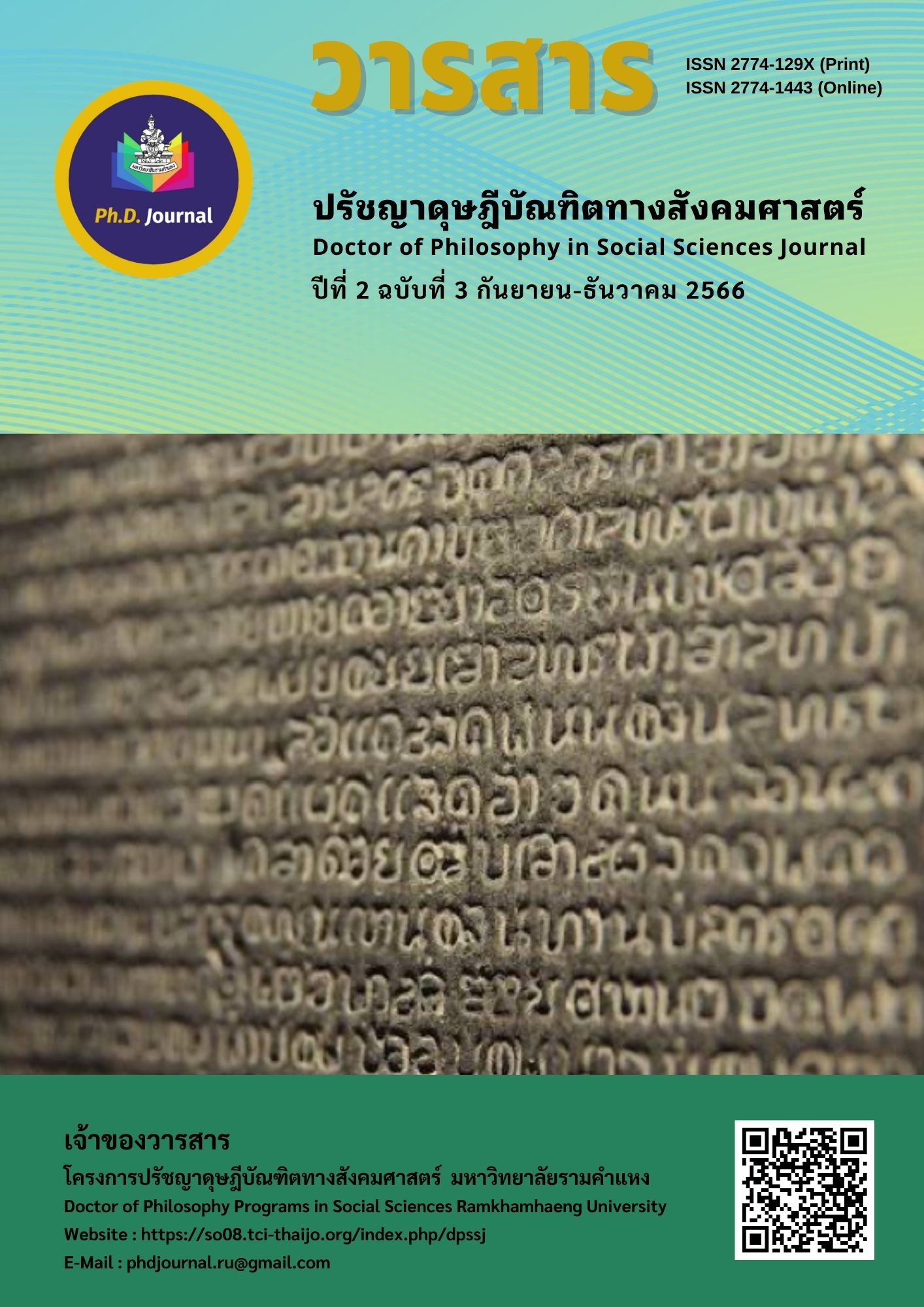Development of the Empowering Thinking Process Model (SNCBE) using multimedia series structure and function of flowering plants Course in Biology (W32243) Subject Group Learning Science and Technology of students in grade 5
Keywords:
Development of the Empowering, Thinking Process Model, Model; Mixed MediaAbstract
The objectives of this research were 1) to develop the efficiency of the development of thinking empowering process model (SNCBE)using the structure and functions of flowering plants mixed media set to develop academic achievement, learning subject group Science and Technology of students in Mathayomsuksa 5, 2) to compare the pre-test with the post test of Mathayomsuksa 5 students’ achievement on the empowering thinking process (SNCBE), and 3) to assess the satisfaction of Mathayomsuksa 5 students after using the thinking empowering process (SNCBE). There are 4 steps of research procedure; 1) fundamental data analysis, 2) design and model development ; 3) trial, and 4) evaluation. The target group was 24 of Mathayomsuksa 5 students, Nonghuakhupuangprachanukror school, Secondary Education Service Area Office, Udon Thani Province, semester 1, academic year 2022, from the purposive sampling. The experiment time was in the academic year 2022 for 20 hours. The research tools consisted of 1) the structure and functions of flowering plants mixed media set, 2) lesson plans of the thinking empowering process (SNCBE), 3) 40 items of learning achievement tests, and 4) 20 questionnaires about teachers’ and students’ satisfaction. Data analysis was carried out through The Efficiency Calculation (E1/E2) percentage(P), mean (x), Standard Deviation (S.D.), and Dependent Samples t-test
The findings were as follows:
1) Learning activity by the efficiency of the development of the thinking empowering process (SNCBE) model using the structure and functions of flowering plants mixed media set
to develop academic achievement; learning subject group Science and technology of students in Mathayomsuksa 5, consist of 1. Principles 2. Objectives 3. Teaching Process, and 4. Evaluation. There are 5 steps in the developed teaching process; 1) to spark ideas, 2) to get new knowledge, 3) to cognitive adjustment, 4) to build new knowledge, and 5) to evaluate learning outcomes. The results of the efficiency of the development of thinking empowering process (SNCBE) model using the structure and functions of flowering plants mixed media set to develop academic achievement, learning subject group Science and Technology of students in Mathayomsuksa 5/1, was equal to 83.00/83.44 , higher than criterion set at 80/80.
2) The comparison results of the development of thinking empowering process (SNCBE) model using the structure and functions of flowering plants mixed media set to develop academic achievement, learning subject group Science and Technology of students in Mathayomsuksa 5/1 post-test achievement was significantly higher than the pre-test at .05.
3) The Mathayomsuksa 5/1 students’ satisfaction levels with the development of the thinking empowering process (SNCBE) model using the structure and functions of flowering plants mixed media set model was found high at the average score of 4.07.
References
กลุ่มนิเทศติดตามและประเมินผลการจัดการศึกษา สำนักงานเขตพื้นที่การศึกษามัธยมศึกษาอุดรธานี.
(2563). ผลการประเมินคุณภาพการศึกษาระดับชาติ (O-NET) ชั้นมัธยมศึกษาปีที่ 6 ของสำนักงานเขตพื้นที่การศึกษามัธยมศึกษาอุดรธานี ปีการศึกษา 2561, 2562 และ 2563.
ทิศนา แขมมณี. (2551). ศาสตรการสอน: องค์ความรูเพื่อการจัดกระบวนการเรียนรูที่มีประสิทธิภาพ.
สำนักพิมพจุฬาลงกรณมหาวิทยาลัย.
ทิศนา แขมมณี. (2558). ศาสตร์การสอน : องค์ความรู้เพื่อการจัดกระบวนการเรียนรู้ที่มีประสิทธิภาพ
(พิมพ์ครั้งที่ 19). สำนักพิมพ์แห่งจุฬาลงกรณ์มหาวิทยาลัย.
พัฒนี นุ่นชูคัน. (2565). การพัฒนารูปแบบการสอนวิทยาศาสตร์เพื่อพัฒนากระบวนการคิดเชิงระบบสำหรับ
นักเรียนชั้นมัธยมศึกษาปีที่ 3. โรงเรียนบ้านท่าดินแดง อำเภอสังขละบุรี จังหวัดกาญจนบุรี. Journal
of Modern Learning Development, 7(10), 105-121.
วนิดา ศรีสุข. (2560). การพัฒนารูปแบบการสอนโดยใช้ชุมชนเป็นฐานเพื่อส่งเสริมทักษะกระบวนการทาง
วิทยาศาสตร์สำหรับนักเรียนชั้นมัธยมศึกษาปีที่ 2 โรงเรียนส้มป่อยพิทยาคม. ดุษฎีนิพนธ์ปริญญาดุษฎีบัณฑิต สาขาวิชาหลักสูตรและการสอน, มหาวิทยาลัยบูรพา.
วัชรา เล่าเรียนดี. (2552). รูปแบบและกลยุทธ์การจัดการเรียนรู้ เพื่อพัฒนาทักษะการคิด (พิมพ์ครั้งที่ 4).
คณะศึกษาศาสตร์ มหาวิทยาลัยศิลปากร.
แสงมณี อยู่พุก. (2562). การพัฒนารูปแบบการเรียนการสอนตามทฤษฎีการสร้างความรู้ด้วยตนเองที่ส่งเสริม
การคิดอย่างมีวิจารณญาณเพื่อการแก้ปัญหาและจิตวิทยาศาสตร์ สำหรับนักเรียนชั้นมัธยมศึกษา
ปีที่ 1. วารสารครุศาสตร์มหาวิทยาลัยราชภัฏสกลนคร, 1(1), 63-74.
Anderson , K. B. (1997) . The Concept of Problem-based Learning Conceptual Framework
and Practice-based Learning . Paper presented at University of Hawaii. March.
Joyce, B., & Weil, M. (1996). Model of teaching (5th ed). BAllyn and Bacon.
Kruse. (2007). Introduction to Instructional Design and the ADDIE Model.
Downloads
Published
Issue
Section
License
Copyright (c) 2023 Doctor of Philosophy in Social Sciences Journal

This work is licensed under a Creative Commons Attribution-NonCommercial-NoDerivatives 4.0 International License.



